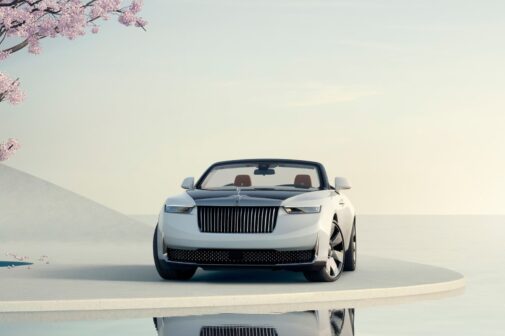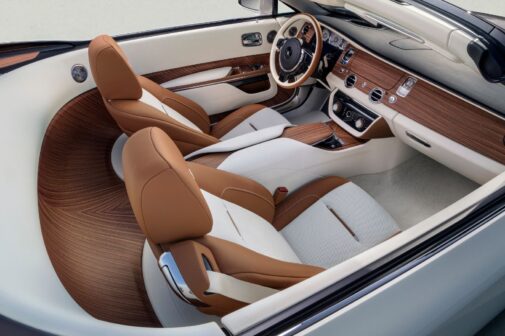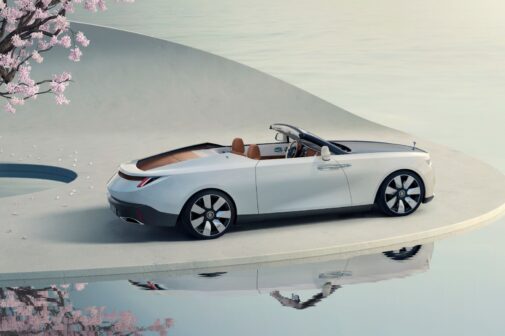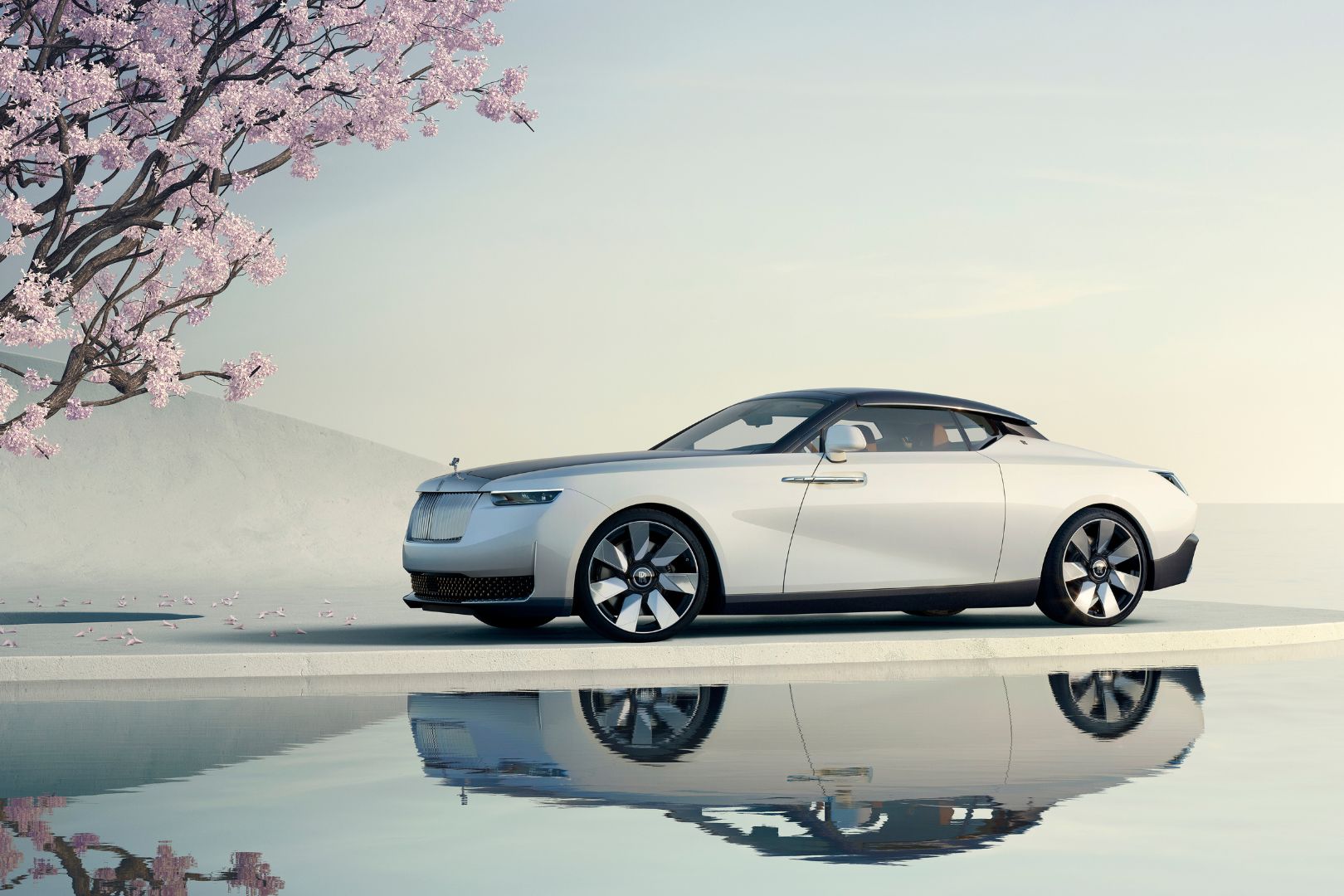When Rolls-Royce does something, the world stands up, and takes notice, and especially if you’re talking about a coachbuilt creation, because you just know whoever RR has made it for, has spent a lifetime of his/her savings on not just a palace on wheels, but an experience that is, for the lack of a better word, like no other!
The Arcadia Droptail is Rolls-Royce’s third Coachbuild Droptail commission, taking its name from Ancient Greek mythology. The client expected this coachbuilt creation to be a haven, a safe space away from the material complexities of the world, and as such, Rolls-Royce has taken design inspirations from around the world, with elements from Singapore, Indonesia, and Vietnam, ultimately fusing it all with British ‘Biomimetic’ architecture.

The solid white paint of the Arcadia Droptail is infused with aluminium and glass particles, which not only helps give it some shimmer, but also creates a certain illusion as well. The carbon fibre panels used to construct the lower parts of the Droptail have been finished in a bespoke silver shade, and the 22-inch alloy rims have been given the mirror-polish treatment.

The interior of the car receives dual-tone treatment, with a bespoke white shade white being the primary colour, while a bespoke tan shade comes in for contrast. Rolls-Royce says the customer wanted to feature wood prominently in this car, and as such, the rear ‘deck’ section and the interiors come with a specimen of wood known as Santos Straight Grain. Rolls-Royce has used 233 pieces of Santos Straight Grain wood throughout the Arcadia Droptail, which was then further reinforced with a bespoke lacquer and other unique testing protocols. The British car maker says the wood pieces and protective coating took over 8,000 hours to perfect.

The Arcadia Droptail also features what Rolls-Royce calls the most complex clock face ever created by the car maker, taking five months to assemble after two years of development. The specially designed clock face includes partly polished, partly brushed hands and 12 ‘chaplets’ – or hour markers – each just 0.1mm thick. To ensure the readability of the timepiece, specialists gave each chaplet an infill bridge and painted them by hand using a camera capable of magnifying an image by up to 100x.

Rolls-Royce hasn’t mentioned what has gone under the hood of this car, but we won’t be surprised if it is the 6.7-litre V12 doing its duties here. As for the price tag, can you really put a price on something like this?















